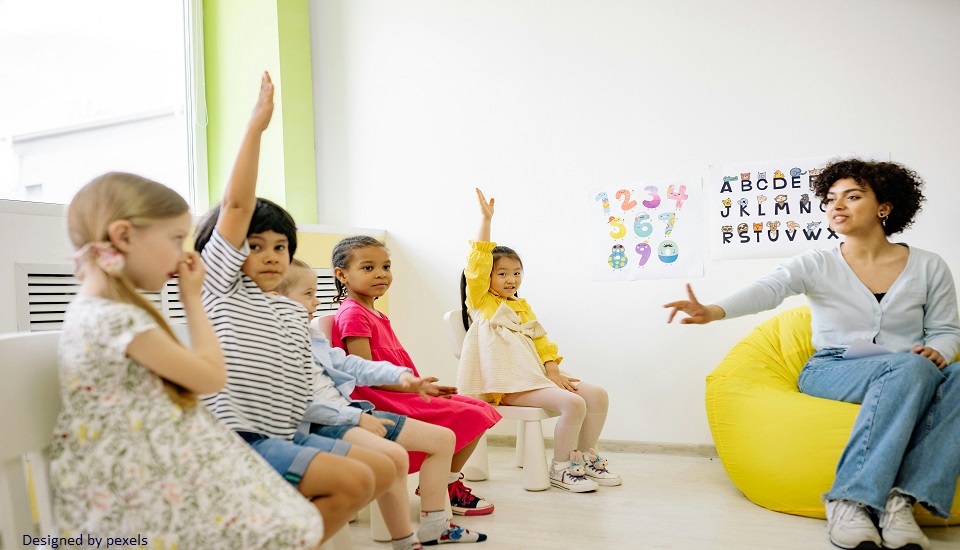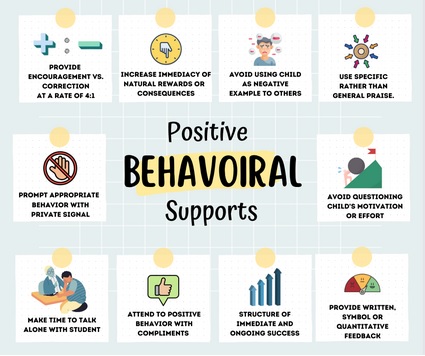What Is The Power Of Positive Reinforcement For Teaching Students With ADHD
19th July 2024

Everybody needs a little extra push now and then. Individuals with ADHD are well aware of how challenging it may be to overcome procrastination and begin working on a topic or project. But it could be easier than you think to get started. It all comes down to figuring out what drives you, and for a lot of people with ADHD, positive reinforcement is the solution.
What Is Positive Reinforcement?
Positive reinforcement refers to the practice of rewarding specific behaviors with something appealing or enjoyable. The behavior is reinforced more when it receives the intended reward regularly. This approach is frequently used to teach new behaviors, such as establishing a routine that includes a good habit. It can also be used to reinforce an already-existing behavior, such as speeding up the completion of specific activities.
What Are The Types Of Positive Reinforcement Techniques?

Source: ot4adhd.com
Four types of positive reinforcers can be used by teachers in a classroom:
- Natural Reinforcers
These are the kinds of rewards that come from doing things organically, like feeling good after working out or doing well on an exam.
- Social Reinforcers
Social reinforcers include praise and various forms of social acceptance. Giving someone praise for their work on a project is one example.
- Tangible Reinforcers
Any tangible reinforcer, such as a piece of candy after doing chores or getting a raise at work, is a physical reward.
- Token Reinforcers
These reinforcers are essentially tokens or points that may be obtained by engaging in specific actions and exchanged for prizes or other valuable items.
Do you follow us on Social Media? If not, then you’re missing out on a lot of informative content. We regularly share upgraded educational content, tips, feedback, and more. Check us out by clicking the profiles here- Facebook / Twitter / LinkedIn / Pinterest / Instagram / YouTube
How Do ADHD Students React To Punishments And Rewards?
For those with ADHD, why does positive reinforcement work? The complex ratio of rewards to penalties ultimately determines the solution. According to research, people with ADHD are more sensitive to punishments and are strongly motivated by some kinds of incentives.
Positive and instantaneous incentives are typically the most helpful for those with ADHD. Ensuring the reinforcers are trustworthy is another way that positive reinforcement may help people with ADHD. Unexpected changes to the incentive may result in a decrease in motivation.
Because persons with ADHD find it more difficult to utilize penalties as an incentive, it's critical to have a good attitude. People who have the illness frequently struggle with low self-esteem and self-doubt, and receiving unfavorable criticism can make these problems worse.
Punishment for doing something wrong, such as handing in an assignment past the deadline, might encourage further procrastination rather than serving as a reminder to do it right next time. ADHDers generally attempt to stay away from circumstances where they could fail or face consequences because of their sensitivity to rejection.
What Are Some Examples Of Positive Reinforcement?
Kids are the subject of a large number of positive reinforcement examples for people with ADHD.
However, other forms of positive reinforcement can be helpful for individuals with ADHD, including:
- Praise
At any age, people with ADHD often react favorably to rapid, sincere, and sincere praise.
- Experiences
Creating a reward system around a desirable experience such as an extended lunch break at work is a terrific approach to promote positive habits.
- Rewards
Money, food, or merchandise associated with their preferred pastime are a few examples of material incentives that may be welcomed.
How To Motivate Your Students With Positive Reinforcement?
There are several strategies you may employ if you have ADHD and wish to become more motivated.
Try these few suggestions:
- Start Small
Starting anything new can often be the hardest part. In these circumstances, concentrate on finishing one tiny step at a time and see whether that motivates you to continue.
- Make It Fun
Try making mundane chores more exciting by, for example, folding clothes while listening to lively music.
- Use Gamification
Make the chore you have to complete into a game. For instance, you may compete with the clock to see whether you can finish it in a set amount of time.
Use Positive Reinforcement For Better Learning
If you're still having trouble staying motivated, as educators who have completed Online Special Education Courses in Singapore, you might want to review your ADHD treatment regimen. Symptoms associated with low motivation and procrastination can be managed by finding a pharmaceutical and treatment combination that works for you.
We believe education should be accessible for everyone. That’s why we don’t charge for our blogs. Find the right course that will help you in your career with us, contact us at - +6531631068. You can mail us at act@asiancollegeofteachers.com.
Written By : Sanjana










